Search
Did you mean: Midas?
Search Results

Definition
Linear A Script
Linear A script was used by the Minoan civilization centred on Crete during the Bronze Age. Used from around 1850 to around 1450 BCE, the script has never been deciphered. Artefacts bearing Linear A script, most commonly clay tablets, have...
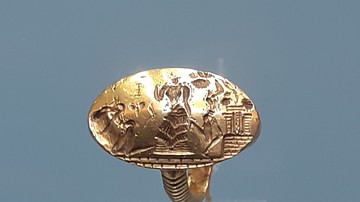
Image
Minoan Gold Signet Ring with Three Figures before a Temple
Gold signet ring showing one female and two male figures before a temple, from Phourni, Crete, c. 1700-1450 BCE. Heraklion Archaeological Museum, Crete. Minoan religion is characterized by the prominent role of female figures engaged in...
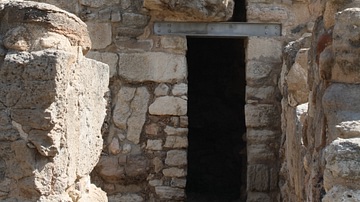
Image
Minoan Horns of Consecration
Bull horns were a common religious symbol in the Cretan Minoan culture (2000 BCE - 1450 BCE), represented in fresco, on pottery and as here from the palace of Knossos, in architectural stone decoration.
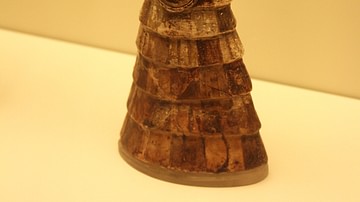
Image
Minoan Snake Goddess, Knossos.
Faience figurine of the Minoan Snake Goddess - her dominion was over nature and fertility. New-Palace period (1600 BCE). Heraklion Archaeological Museum, Crete.
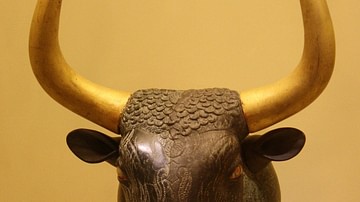
Image
Minoan Rhyton
Stone rhyton (libation vase) in the form of a bull's head from the Minoan site of Knossos, New-Palace period (1600-1500 BCE), Heraklion Archaeological Museum, Crete.
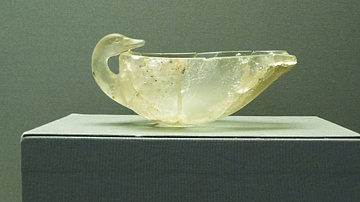
Image
Minoan Rock-Crystal Bowl
A Minoan rock-crystal bowl in the form of a duck, 16th century BCE. The vessel was found at Mycenae but has been attributed to the earlier Minoan civilization based on Crete. The vessel was probably used to store cosmetic creams. (National...

Image
Minoan Bull Leaping
A fresco showing bull leaping, Minoan Knossos (Final Palatial period 1450-1400 BCE), Heraklion Archaeological Museum, Crete.
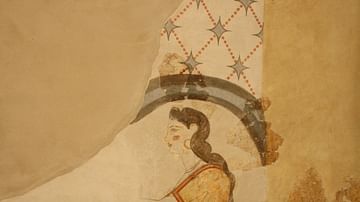
Image
Minoan Lady, Fresco, Akrotiri
A fresco from the House of the Ladies in Akrotiri on the Aegean island of Thera (Santorini), c. 17th century BCE. The several women depicted on the walls of the room wear typical Minoan dress. Above the women is a representation of a starry...
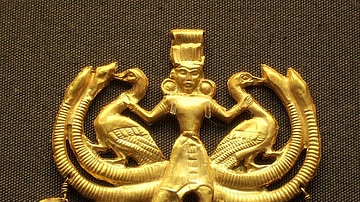
Image
Minoan 'Master of the Animals' Pendant
A solid gold pendant from the Minoan civilization depicting a deity holding two birds, possibly geese (18-17th century BC). Provenance: Aegina (British Museum, London)
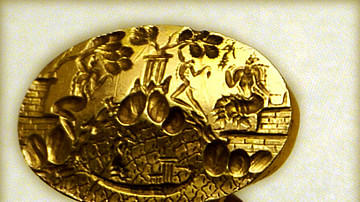
Image
Minoan Gold Ring
An engraved gold ring from the Minoan civilization on Crete, 15-14th century BCE. The ring probably originates from Knossos and depicts the epiphany of a goddess: seated in a shrine, floating in the air and standing in a boat. The hoop is...